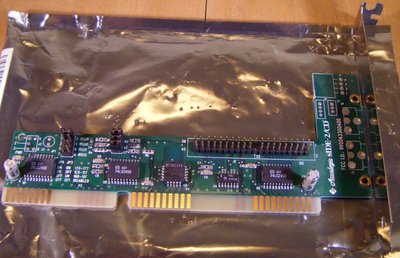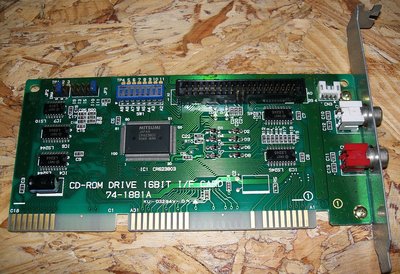First post, by feipoa
- Rank
- l33t++
I have the following ISA, IDE CD-ROM controller card I bought in the 90's for use on 386's and 486's without onboard IDE ports. Even those which have onboard IDE ports often won't work with IDE CD-ROM drives. So this Acculogic card has come in handy for testing for over 20 years. This photo is from online, but mine look identical, except mine has the RCA ports on the back plate and an CD-ROM audio connector on the PCB.
Needing another one, I went looking, but couldn't find one of these. Instead, I found what was far more plentiful on eBay, it is called CD-ROM DRIVE 16BIT I/F CARD 74-1881A. It has a Mitsumi chipset, CR623803. Does anyone have the jumper manual for this card? There's two jumper blocks and one 8-switch DIP switch.
JP2, which says DMA, and numbers next to jumpers, 5, 6, and 7. I assume this is for selecting the DMA channel. Do CD-ROM's use direct-memory access?
JP3, which has no label. There are jumper locations with headings of: I9, I3, I5, blank, I10, and I11. IRQ's? But what is blank for? On the Acculogic, the IRQ's selections are for 10, 11, 12, and 15. Seemed odd to me that the Mitsumi card would hae 3 and 5 available, but not 12 and 15.
There is a dip switch, SW1. The labels for each switch are A9, A8, A7, A6, A5, A4, A3, and A2. I assume these are addresses, like 1E8-1EF, but there is no table indicating which switch is for which address. And by default, the switch has A2-thru-A7 set to ON, and A8 & A9 set to OFF.
Anyone with a manual for this card? And will it only work with Mitsumi drives? My Acculogic has worked with every CD-ROM I've tested it with thus far.
Plan your life wisely, you'll be dead before you know it.

